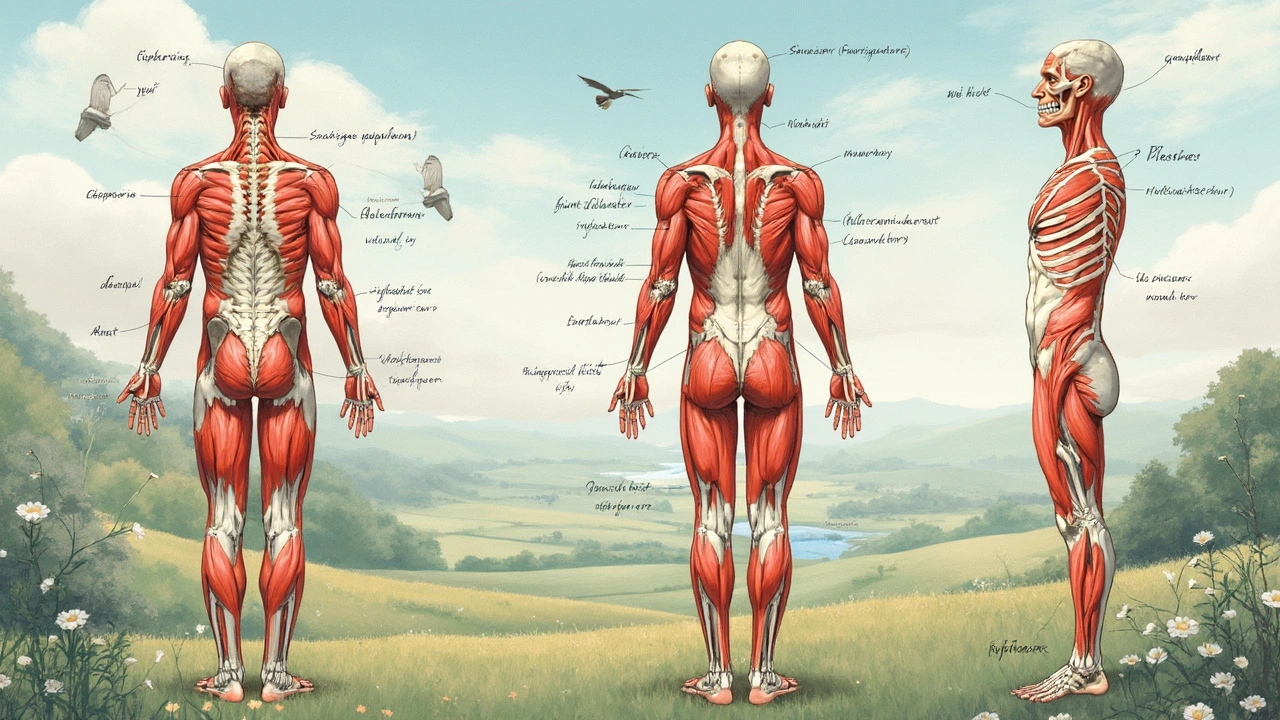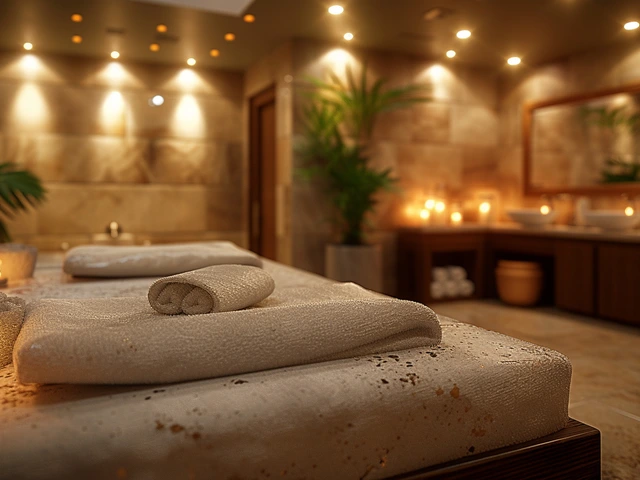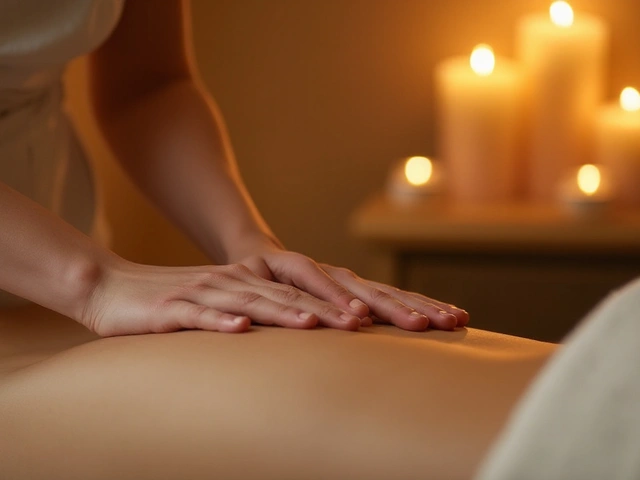Trigger Point Massage: New Hope for Pain Relief

Chronic pain is a relentless struggle for many, making simple tasks feel like climbing a mountain. But have you ever heard of trigger points? These are sensitive spots in your muscles that, when poked the right way, can relieve pain not just where they are but in surprising places elsewhere in the body too. They're like a best-kept secret in the world of pain relief.
Picture this: You’ve got a knot in your shoulder, but the ache radiates down to your elbow or even your back. Annoying, right? That’s a trigger point at work, playing tricks on your body’s pain map. The good news? Trigger point massage might just be your new best friend in tackling this frustration head-on.
Instead of just rubbing the sore spots, trigger point massage dives deep into these muscle knots to release tension. This technique doesn’t require fancy equipment or a glamorous spa day. In fact, with a few pointers, it’s something you could try out right at home. And who doesn't want to be their own pain relief superhero?
- Understanding Trigger Points
- Benefits of Trigger Point Massage
- Techniques for Self-Massage
- When to Seek Professional Help
Understanding Trigger Points
So, what exactly are trigger points? Think of them as the grumpy neighbors in your muscles. They’re these incredibly tight bundles of muscle fibers that don't just hurt right where they are but can also send zingers of pain to other areas in your body. It’s like a ripple effect of tension.
Why Do Trigger Points Form?
You might wonder why these pesky things form in the first place. Well, they can pop up because of various reasons: poor posture, stress, injury, or even just everyday wear and tear. Picture sitting hunched over your laptop for hours – your muscles might hold onto stress and eventually form these annoying knots.
Identifying Trigger Points
Identifying them isn't just about where it hurts. When pressing on a trigger point, you often feel pain in another area, a phenomenon known as referral pain. For instance, a trigger point in your shoulder might cause discomfort in your elbow. It’s crucial to know this because treating the wrong spot won’t do much good!
- Common trigger points include places like the neck, shoulders, and lower back.
- Muscles mainly affected include the trapezius, levator scapulae, and gluteal muscles.
The Science Behind Trigger Points
These muscle knots are often filled with a general tension and energy crisis, meaning the muscle fibers contract continuously without relaxation. Cool science tidbit? Studies suggest that about 85% of people experience trigger points at some point in their lives, contributing to common chronic pain complaints.
Why Should You Care?
Getting a handle on understanding trigger points is key to finding pain relief. Recognizing these spots can lead to more effective self-massage techniques or knowing precisely what to ask for when visiting a professional therapist.
Benefits of Trigger Point Massage
At first glance, trigger point massage might seem like just another massage technique, but it targets hidden muscle knots that are often the culprits behind chronic pain. Imagine being able to tackle that persistent tension headache by simply focusing on a single spot in your neck. That's the power of understanding and using this technique effectively.
One major benefit is pain relief. These knots can cause discomfort at the point or refer pain elsewhere. By pressing and holding these points, it's possible to release tension and normalize muscle function, offering significant relief. As Dr. Janet Travell, one of the pioneers in trigger point therapy, said, "The pain of a trigger point is rarely located at the trigger point itself. But release that trigger, and you may feel relief you didn’t think possible."
Improved Flexibility and Range of Motion
Stiff muscles can stop us from reaching our full potential—like trying to sprint with your shoelaces tied together. By easing out the trigger points, mobility can improve, enabling smoother movement.
Enhanced Muscle Performance
Tightness and pain can make even a simple walk feel challenging. Regular trigger point work can help muscles perform at their best, whether you're training for a marathon or just trying to enjoy a pain-free stroll in the park.
Stress Reduction
While trigger point massage is intense, the aftermath is surprisingly relaxing. Releasing muscle tension helps alleviate stress, which in today's fast-paced world, is a benefit anyone can appreciate.
Considering the ways trigger point massage can enhance physical wellbeing, it's no surprise that more people are turning to this practice to manage their aches and pains. Embracing this approach means fewer pills and more natural, hands-on care that puts you in control of your body.

Techniques for Self-Massage
If you're dealing with chronic pain, learning how to do trigger point massage on yourself can be a real game-changer. It’s not about being a massage pro; it's about knowing how to hit the right spots.
Getting Started
First off, find your trigger point. This is usually the spot that’s particularly tender or causes pain elsewhere when pressed. Don’t stress if it takes a bit of searching; your muscles might be hiding these spots like a mischievous cat. Once you’ve found it, apply steady, consistent pressure.
Tools You Might Use
While your hands are your primary tools, you might want to grab a tennis ball or a foam roller. A tennis ball is great for precise pressure on smaller areas, like your shoulders or back of the neck. Just put it between your body and the wall or floor, then roll around until you hit the sweet spot.
- Tennis Ball: Use for smaller muscle groups or when you need to pinpoint a precise area.
- Foam Roller: Excellent for larger muscles like your legs or upper back. Roll slowly, spending extra time on sore spots.
The Right Pressure
Avoid going overboard with pressure; you’re aiming for the “good hurt” – a sensation where it feels uncomfortable but not unbearable. Too much force can leave you sorer than when you started.
Set a Routine
Consistency is key. Aim to spend about 5-10 minutes daily on trigger point massage, concentrating on the spots that bother you most. It’s like brushing your teeth; once it’s part of your daily routine, you barely think about it.
Listen to Your Body
After working on a trigger point, take a moment to gently stretch the area to help ease any tension. Stay hydrated and give yourself a break if your muscles start feeling tired or sore.
If you're dealing with persistent pain and self-massage isn’t helping, it might be time to call in a pro. Getting a professional trigger point massage could provide deeper relief than you can manage on your own.
When to Seek Professional Help
So, you've tried some DIY trigger point massage techniques, but something’s still off? Maybe that persistent knot isn’t giving up, or it's affecting your everyday life. Let's chat about when it's time to call in the pros.
Persistent Pain and Lack of Improvement
If you're hitting a wall with your pain relief efforts, like when the ache doesn't quit or gets worse, it might be a sign to see someone skilled in muscle therapy. Therapists know exactly how to handle stubborn trigger points and can tailor treatments to what your body needs.
Complex Symptoms
Notice any unusual symptoms like tingling, numbness, or shooting pain? These could be red flags indicating that your issue might be more than just a simple muscle knot. A professional evaluation can rule out serious concerns and provide an effective treatment plan.
Lack of Knowledge or Experience
Navigating the world of massage techniques can be overwhelming if you're new to it. If you're not comfortable trying out massage techniques on your own, that's perfectly fine. Professionals have the skills and knowledge to safely manage chronic pain relief and avoid making things worse.
When Self-Massage Isn't an Option
Sometimes reaching those pesky back trigger points feels like trying to touch your elbow with your tongue. That's when you should book a session with someone who can actually see and reach the spots you can't.
Remember, there’s no shame in asking for help. Seeking professional assistance can offer peace of mind and comfort, knowing you’re in good hands. Professional massage therapists are like detectives for the body, and they’re ready to help unravel the mystery of your pain.





